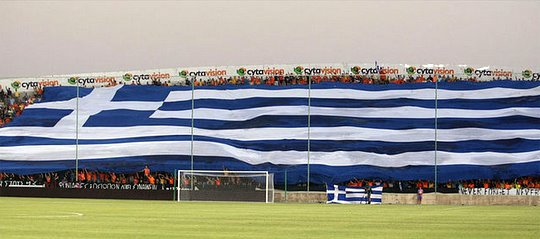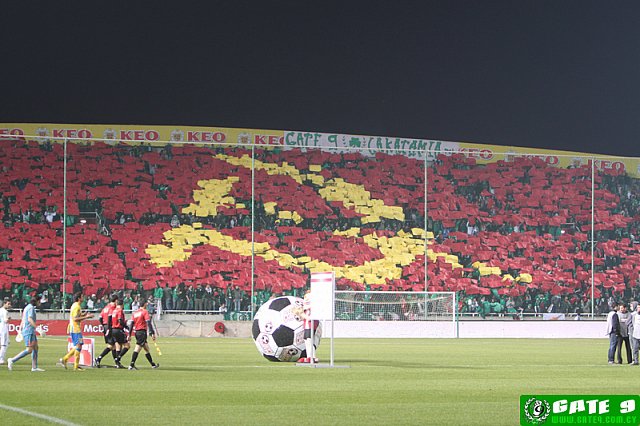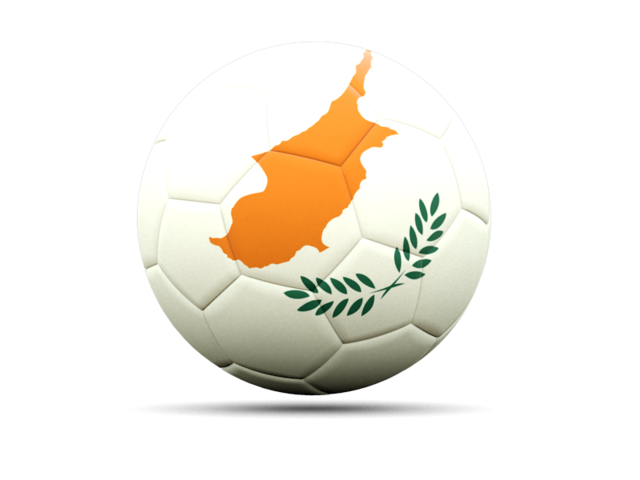Article written by : BEC Sport
In Europe, fan identities are often constructed on divides such as, locality, social-class, religion or politics. Similar to how Glasgow’s two major soccer teams are historically associated with religion, soccer clubs in Cyprus have been used to promote political ideologies. Having personally visited the island many times myself, I first took an interest in Cypriot soccer when, aged 13 I was taken by a family friend to see Nea Salamina versus PAEEK (Podosfairiki Athlitiki Enosi Eparxeias Kerynias, to be precise). Even as a young lad, I was fascinated by PAEEK’s decision to play in an all black ensemble. The club resides from Kyrenia, a town in the north of Cyprus now under Turkish control and the black kit symbolises the grief caused by the invasion and subsequent re-location. PAEEK now play their home games in Nicosia but hope to one day return to Kyrenia. Only then, will the club return to playing in their original colours of yellow and black. Although FIFA and UEFA insist that soccer must remain politically neutral, it is hard to ignore political undertones when attending a match in Cyprus as soccer there has largely been structured around the historical rivalry between left and right.

“Fans of Omonoia, you are horkates (slang term for village people/people of lower class), In the fields you pick potatoes, I fuck Che and your people…” – APOEL fans
Following the Turkish invasion in 1974 the two main-communities, Greek-Cypriots and Turkish Cypriots, fled to the South and North of the island respectively and have lived in separation ever since. This also meant soccer clubs that previously resided in the north of the island were re-located. Although politics are an inherent part of everyday social culture, soccer stadiums in Cyprus are where political sectarianism is most prominent. A common feature of fan communication is the display of the national flag of Cyprus or Greece. The basis of this contrast is the identification with left or right wing ideologies. Some supporter groups (e.g APOEL, Anorthosis Famagusta) consistently display the Greek national flag in order to align themselves to the idea of ‘Hellenism’ (the belief that Greek-Cypriots are predominantly Greek and Cyprus is simply an annex of the Greek main-land), whereas displaying the Cypriot flag could act as a sign of support for Cyprus as an independent nation. The divide is illustrated perfectly by fans of Nicosia teams, APOEL and Omonoia. APOEL, were founded in 1926 as a soccer club for the Greeks of Nicosia and Omonoia were born in 1948 when several APOEL players who belonged to a communist party, broke away to form a new team. The rivalry was born and the stadiums of the two clubs have represented an arena for the expression of political antagonisms. APOEL fans regularly use the Greek flag as a symbol of their right-wing connection with Hellenism and Omonoia fans regularly display symbols related with the left-wing such as the hammer and sickle (see photos). Using songs and banners, APOEL fans have even taunted their rivals by branding them ‘Turks’. This term is used as a way of offensively describing someone who is ‘non-Greek’, and also a historical enemy. In response, Omonoia fans have ironically identified with being Turkish, and even used chants and banners referring to historical events in which Turks have defeated Greeks.

Omonoia fans displaying ‘Hammer and Sickle’ symbol.
“The use of gestures, words, objects or any other means to transmit any message that is not fit for a sports event, particularly messages that are of a political, ideological, religious or provocative nature will not be tolerated.” (UEFA, 2014)
Omonoia (and Celtic, St Johnstone and Dundalk FC) were recently fined after supporters displayed Palestinian flags during UEFA organised matches. This may have come as a surprise to Omonoia fans who are used to watching domestic soccer which is awash with political symbols, banners and flags. It does beg the question as to where the line can be drawn and what does or does not fit into UEFA’s criteria. One could ask whether a Greek flag flown by APOEL or Anorthosis fans could be considered politically inflammatory. Hang on a minute, isn’t any national flag a political symbol? What if Omonoia signed a Palestinian player? Would they be fined for displaying a ‘hammer and sickle’ like they regularly do in domestic games?
Whilst this article aims to point out political references in Cypriot soccer, it also highlights the fluidity in supporter culture and suggests that displaying political symbols can simply be a way of irritating an opponent rather than representing genuine beliefs. Omonoia fans don’t consider themselves Turkish, but are happy to identify themselves as ‘Turks’ in a soccer context in the same sense that not all APOEL fans have Hellenic ideologies. The political references are in no doubt visible, but the extent to which they represent genuine political beliefs is questionable. After all, like in most soccer rivalries, irritating, degrading and insulting your rival is ‘what counts’.



